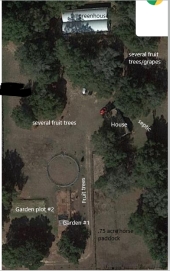posted 12 years ago
Alan, thank you for bringing up this question, and to Zach for your answer.
I too struggle with this. What I usually do is to look at many ideas and possibilities, from these forums, or books, or videos, etc, then walk around my land trying to notice wind, sun, shade patterns, or where water runs or sits, or where I want a place to sit, etc. Sometimes I lay out old hoses or boards to visualize a garden bed or structure, etc, and then try to see how it fits into the larger landscape and my goals.
I also try drawing ideas on paper, and then try marking them on the ground, observing the contours, and how it relates to other elements desired or already there. I know I should probably observe more, but when I decide I like the way something looks I go ahead and start making a small garden bed. Sometimes I change something, but mostly my garden just gradually expands.
I guess that is why Mollison encourages us to start with a nucleus, something in zone one, very close to the house where we can see it and make use of the products, before expanding outward. It is better to plant 10 important trees, and a small garden, and keep them alive, than to plant 100s that we can't take care of. So if we start with a small swale or hugelbed, that can be expanded if we decide to, or lay out a system of beds, but only dig or sheet mulch one at first and learn how by doing, then we can add to our system as time, energy, need, and desire help us determine how to expand the nucleus we started with.
Even Mel Bartholomew, of Square Foot Gardening, suggests starting small, with one bed, then adding another if you want more production. That is how we learn by doing. I have picked up a lot of great ideas, both at Permies, and from many other sources. But that doesn't mean I can, or should, just jump in and turn my whole 2 acres into a complex system of swales or hugelmounds this year--even though sometimes I think I want to do just that!
I too am eager to see my barren land become productive, either as a poultry forage pasture, a savanna, or a food forest, or some combination. But I try to remind myself to slow down and work on small pieces that are manageable, instead of trying to do it all at once. As the smaller sections start producing food, forage, fertilizer, fuel, and all the other products I hope for, including propagation stock, then I can reduce input to those areas and move on to other portions of the land. At least, that is the way I hope it will work.













 6
6




 1
1




 1
1








 2
2











